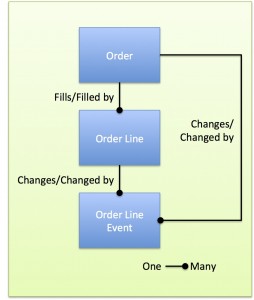Recently I read a thoughtful post 
at the PASS Business Analytics Conference site discussing how different the world is now for database professionals. Author Chris Webb focuses on the data science side in this post. His analysis made me think of the challenges and opportunities “big data” serves up to relational database designers.
To me these challenges are fundamental. Big Data and NoSQL bring lots of what we know about data elements, inherent data design, and data management into question. I think considering these elements closely leads to a sensible to-do list for relational database professionals. Continue reading
 As important as it is, data modeling has always had a geeky, faintly impractical tinge to some. I’ve seen application development projects proceed with a suboptimal, “good enough”, model. The resulting systems might otherwise be well-architected, but sometimes strange vulnerabilities emerge that track directly to data design flaws.
As important as it is, data modeling has always had a geeky, faintly impractical tinge to some. I’ve seen application development projects proceed with a suboptimal, “good enough”, model. The resulting systems might otherwise be well-architected, but sometimes strange vulnerabilities emerge that track directly to data design flaws.